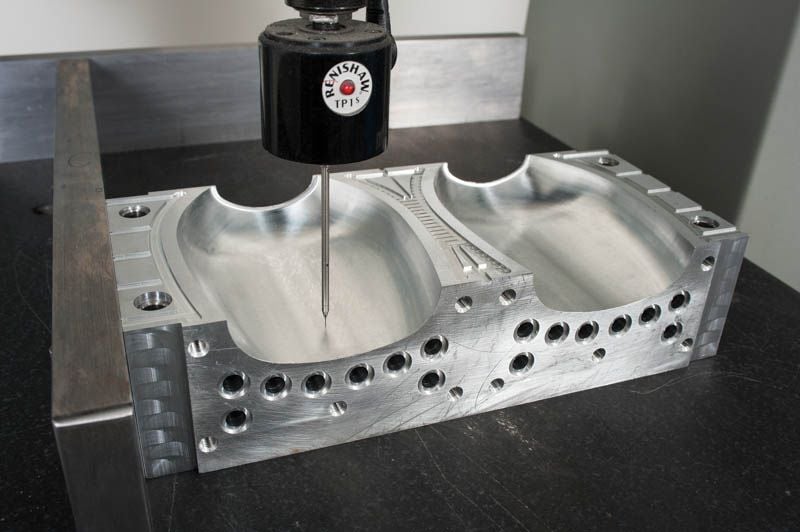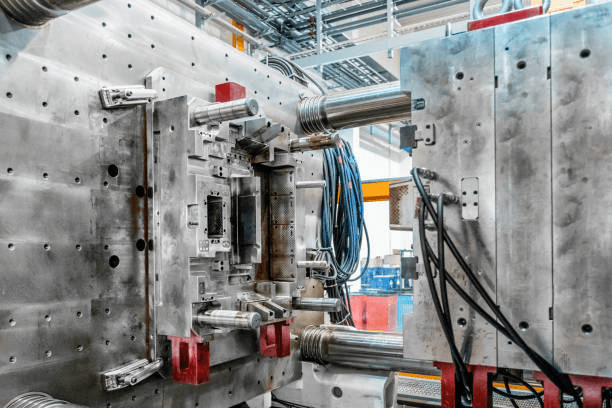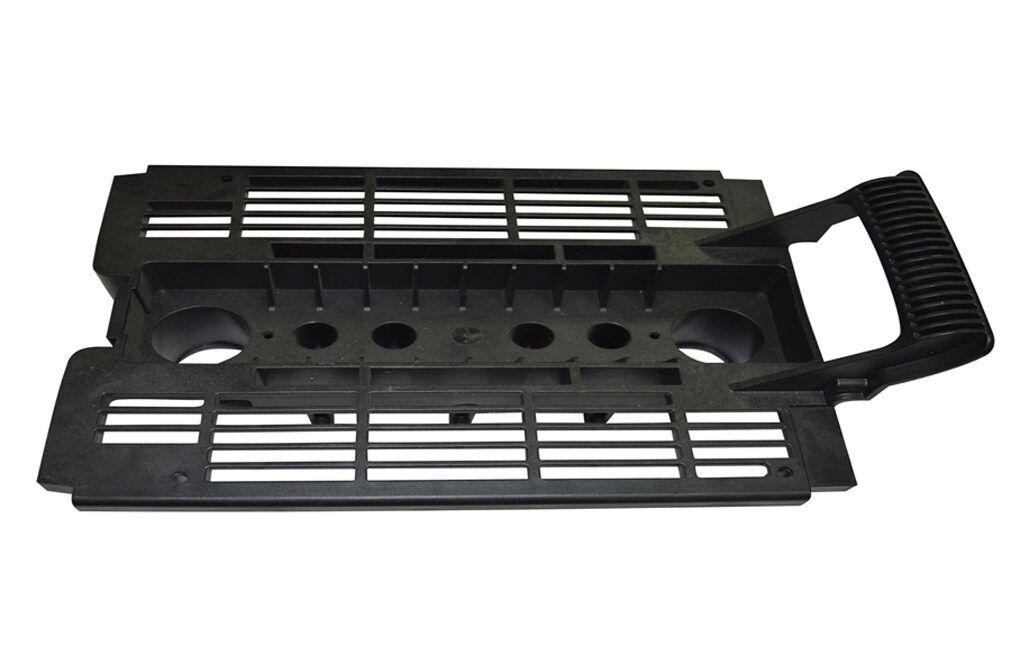Injection molding is a manufacturing process that involves injecting molten material into a mold, where it cools and solidifies to take the shape of the mold. The most common material used in injection molding is plastic, but other materials like metal and rubber can also be used.The choice of material opted for from themedical plastic injection molding company is critical because it affects the properties of the final product.
The strength, flexibility, and durability of the product are all determined by the material used. Different materials have different melting points, shrink rates, and other characteristics that can impact the success of the injection molding process.
For example, some materials may have a higher melting point and require higher temperatures to melt, while others may have a lower melting point and require lower temperatures. Similarly, some materials may have a higher shrink rate and require more precise tolerances in the mold, while others may have a lower shrink rate and be more forgiving.
A Guide To Injection Molding Material Selection
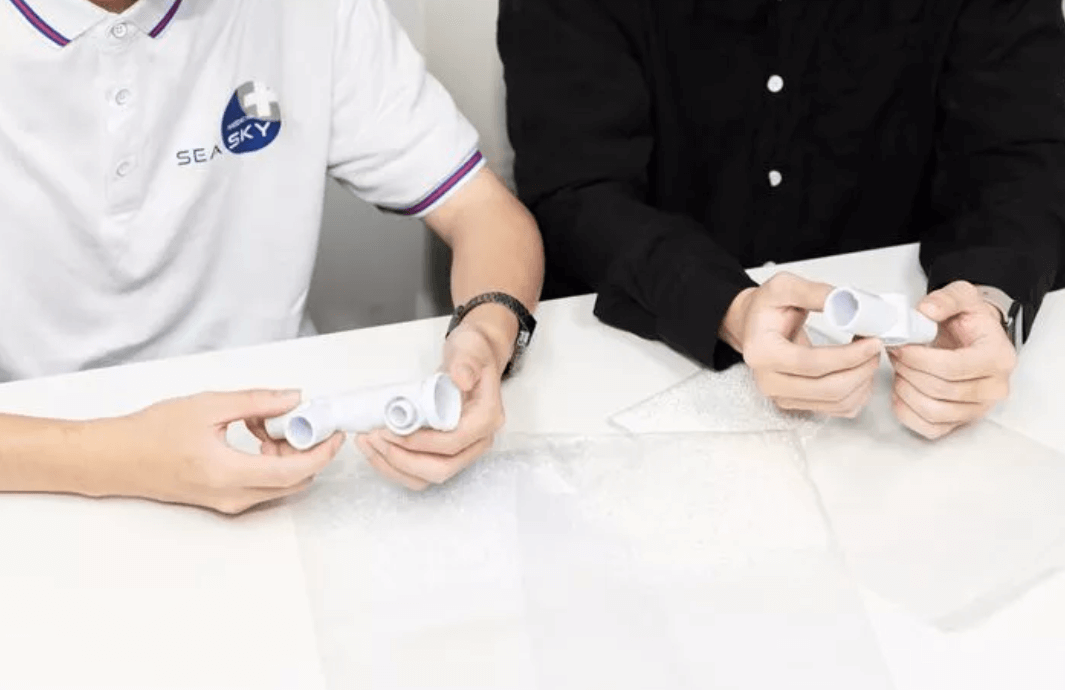
Selecting the appropriate material for injection molding is crucial and a clean room injection molding for the success of the final product
Here is a general guide for selecting the appropriate material for injection molding:
- Understand the requirements of the product: The final product’s properties like strength, flexibility, durability, temperature resistance, and chemical resistance all should be considered while selecting the material. It’s important to choose a plastic material that meets all the requirements of the product to ensure its functionality and performance.
- Research available materials: Injection molding material selection can be done with a variety of materials like ABS, polycarbonate, nylon, and polypropylene. It’s important to research the different types of materials available, their properties, and applications to find the best one for your product.
- Consider the cost: Cost is an important factor to consider when selecting a material. Different materials have different costs, and it’s important to choose a material that fits within your budget while still meeting the requirements of the product.
- Consider the molding process: Different materials may have different requirements for the medical device injection molding process, such as specific temperature and pressure ranges, different shrinkage rates, and so on. It’s important to consider these requirements to ensure the material can be molded properly.
- Consider the environmental impact: The environmental impact of different materials should be considered when making your selection. Some materials may have a greater environmental impact than others, so it’s important to consider this when making your selection.
- Consult with an expert: Injection molding material selection can be complex, and it’s important to consult with an experienced professional who can help you make the best choice for your product. They can help you to understand theplastic selection guide properties, process, and cost, and can guide you through the process of selecting the best material for your product.
It’s important to note that this is a general guide, and the specific material selection will be different based on the specific product and its requirements. It is also important to consider the regulatory compliance of the material with the industry standards and regulations in the intended country of usage.
Materials Selection For Injection Molding
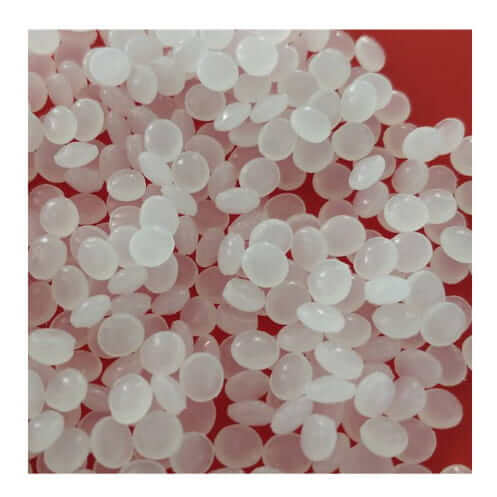
Materials selection for injection molding is an important step in the manufacturing process for any medical components manufacturer as it directly impacts the properties and performance of the final product. The following are some key factors that should be considered when selecting a material for injection molding:
- Mechanical properties: The material should have the necessary strength, stiffness, and toughness to meet the requirements of the product design. For example, if the product is going to be used in a high-stress application, the material should have a high tensile strength and be able to withstand high loads.
- Thermal properties: The material should have the appropriate thermal properties to withstand the injection molding material selection process and the intended end-use environment. For example, if the product will be used in high temperatures, the material should have a high melting point and be able to retain its shape and strength at high temperatures.
- Chemical resistance: The material should be able to resist any chemicals that it may come into contact with during its intended use. For example, if the product will be used in a harsh chemical environment, the material should be resistant to corrosion and chemical degradation.
- Cost: The material should be cost-effective and fit within the budget for the project. The cost of the material can have a significant impact on the overall cost of the product, so it’s important to consider this factor when selecting a material.
- Moldability: The plastic material selection should be suitable for the injection molding process, with appropriate flow characteristics, shrinkage rates, and filling properties. Some materials may be harder to mold than others, and this can impact the overall cost and efficiency of the production process.
- Availability: The material should be readily available and easy to source. A material that is difficult to find or not commonly used may increase the cost of the production process and delay the project.
- Recyclability and environmental impact: The plastic material selection should have minimal environmental impact and be recyclable if possible. This helps to minimize the environmental impact of the product, and also helps to keep costs down by reducing the need for new raw materials.
It’s important to note that different materials have different properties and characteristics, so it’s important to consult with an experienced professional at any medical plastics manufacturer so that one can help you make the best choice for your product. They can help one to understand the material properties, process, and cost, and can guide through the process of injection molding material selection guidefor the product.
Why Plastic Material Selection Guide Matters
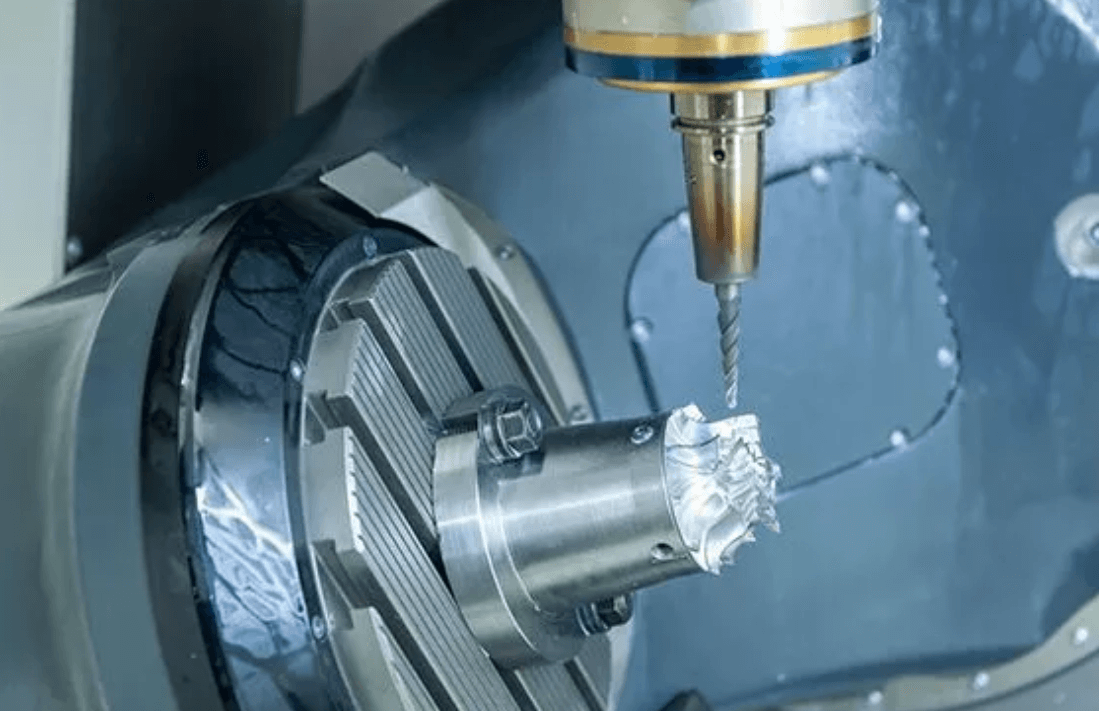
Plastic material selection is an important step in the injection molding material selection process as it affects the properties of the final product such as its strength, flexibility, and durability. The plastic material selection guide helps to ensure that the final product meets the required performance specifications, is cost-effective, is produced efficiently, has minimal environmental impact and meets all relevant industry standards and regulations and this is taken care of by the respectiveplastic molding company.
- Product Performance: The material selection guide helps to ensure that the final product meets the required performance specifications. It helps to ensure that the product has the necessary strength, stiffness, and toughness to meet the requirements of the product design. This ensures that the product will function as intended and meet the needs of the end user.
- Cost-Effectiveness: The plastic material selection guide helps to ensure that the material used is cost-effective and fits within the budget for the project. It helps to ensure that the material used is not only suitable for the product design but also affordable. This helps to keep production costs down and make the product more competitive in the market.
- Production Efficiency: The material selection guide helps to ensure that the material used is suitable for the injection molding process and that it has appropriate flow characteristics, shrinkage rates, and filling properties. This helps to ensure that the production process runs smoothly and efficiently, which can save time and money in the long run.
- Environmental Impact: The material selection guide helps to ensure that the material used has minimal environmental impact and is recyclable if possible. This helps to reduce the environmental footprint of the product and make it more sustainable. It also helps to reduce waste and conserve natural resources.
- Meeting Standards: The material selection guide helps to ensure that the material used meets all relevant industry standards and regulations. This helps to ensure that the final product is safe and suitable for its intended use. It also helps to ensure that the product can be legally sold and used in different markets around the world.
The injection molding material selection guide matters because it helps to ensure that the final product is of high quality, cost-effective, produced efficiently, has minimal environmental impact and meets all relevant industry standards and regulations. It helps to make sure the product is desirable to customers and that it can be legally sold in the market.
Common Materials For Injection Molding
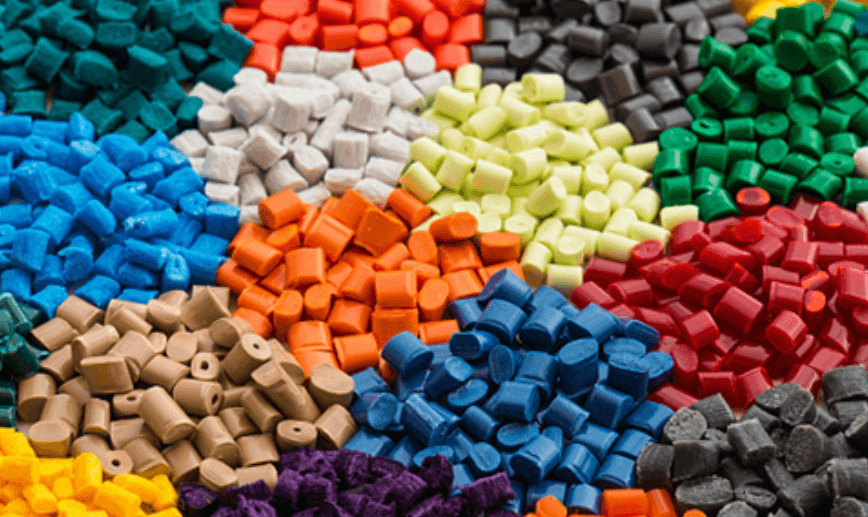
There are many different materials that can be used for injection molding and each one has its own unique properties and characteristics that make it suitable for different applications. Some of the most common materials include:
- Polyethylene (PE): This is a lightweight, versatile plastic that is commonly used for a wide range of products, including packaging, containers, and household goods. It is known for its excellent chemical resistance, low cost and its ability to be produced in high volume at a low cost.
- Polypropylene (PP): This is a strong, stiff plastic that is commonly used for products such as automotive parts, household goods, and packaging. It is known for its excellent chemical resistance and high temperature tolerance, and it is also widely used in food packaging due to its high heat resistance.
- Polyvinyl chloride (PVC): This is a strong, rigid plastic that is commonly used for products such as pipes, window frames, and siding. It is known for its excellent chemical resistance and low cost, and it is also widely used in construction and building materials.
- Acrylonitrile butadiene styrene (ABS): This is a strong, impact-resistant plastic that is commonly used for products such as toys, automotive parts, and electronic housings. It is known for its excellent impact resistance and toughness.
- Acetal (POM): This is a strong, stiff, and low-friction plastic that is commonly used for products such as gears, bearings, and electrical components. It is known for its high strength, stiffness, and excellent wear resistance.
- Polycarbonate (PC): This is a strong, transparent plastic that is commonly used for products such as safety glasses, electronic housings, and medical equipment. It is known for its high impact resistance and transparency.
- Nylon (PA): This is a strong, durable, and heat-resistant plastic that is commonly used for products such as gears, bearings, and electrical components. It is known for its high strength, toughness, and wear resistance.
These are just some of the common materials used in injection molding, other materials like Polystyrene (PS), TPU, TPE, and many more are also used depending on the specific requirements of the product. It’s important to consult with an experienced professional for help as one can make the best choice for the product.
They can be helpful to understand the material properties, process, and cost, and can guide one through the process of selecting the best material for the product and also if a medical device injection molding is used. They can also be helpful in finding the best material that meets the standards and regulations in the industry.
Factors of material selection for injection molding
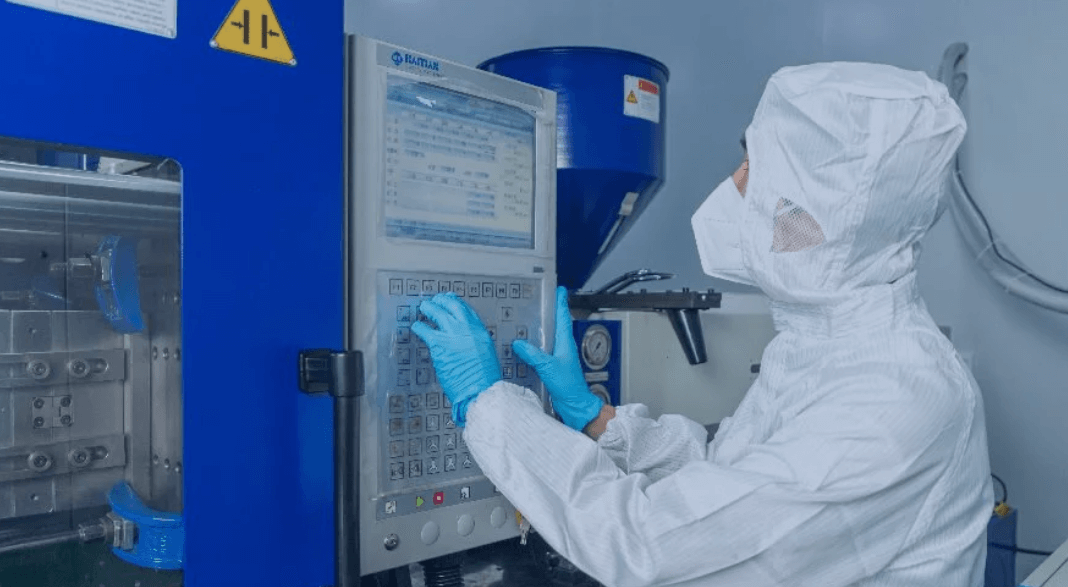
Material selection for injection moldingis an important step in the manufacturing process as it directly impacts the properties and performance of the final product. The following are some key factors that should be considered when selecting a material for injection molding:
- Material properties: The material’s mechanical properties such as strength, stiffness, and toughness are important factors to consider when selecting a material for injection molding. These properties will affect the overall performance of the final product and determine if the material will withstand the intended use and environment.
- Chemical resistance: The chemical resistance of the material is also an important factor to consider when selecting a material for injection molding. The material should be able to resist any chemicals that it may come into contact with during its intended use. It is important to ensure that the material will not degrade or lose its mechanical properties when exposed to specific chemicals.
- Thermal properties: The material’s thermal properties such as its heat resistance, and thermal conductivity are important to consider when selecting a material for injection molding. The material should have the appropriate thermal properties to withstand the injection molding process and the intended end-use environment.
- Cost: The cost of the material is an important factor to consider when selecting a material for injection molding. The material should be cost-effective and fit within the budget for the project.
- Moldability: The material should be suitable for the injection molding process, with appropriate flow characteristics, shrinkage rates, and filling properties. This ensures that the material can be molded and shaped into the desired product with minimal defects.
- Recyclability and environmental impact: The material should have minimal environmental impact and be recyclable if possible. This helps to minimize the environmental impact of the product, and also helps to keep costs down by reducing the need for new raw materials.
- Availability: The material should be readily available and easy to source. A material that is difficult to find or not commonly used may increase the cost of the production process and delay the project.
- Compliance: The material should comply with the standards and regulations in the industry and country of usage to ensure the safety of the end-users. It is important that the material meets the safety standards and regulatory requirements to ensure the product is safe to use.
It’s important to note that different materials have different properties and characteristics, and it’s important to consult with an experienced professional to help you make the best choice for your product based on the specific requirements of the product and to ensure the compliance with standards and regulations in the industry. Customized injection molding should also be performed to make a better and safer form and to fulfill the requirement.
The Importance Of Understanding Injection Molding Material Selection
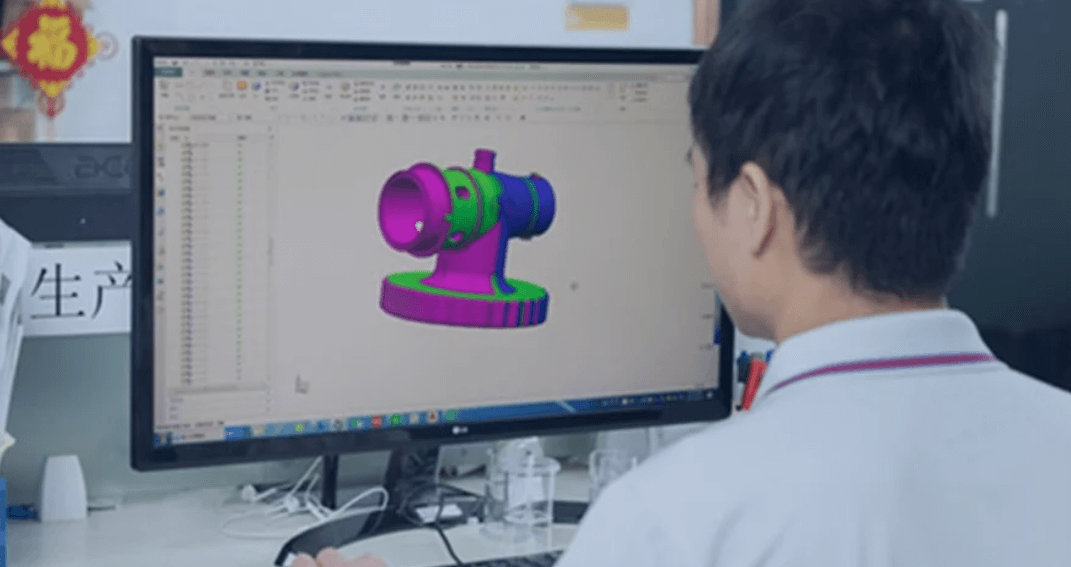
Knowing about your injection molding material selection is important for several reasons:
- Product Performance: The Injection molding material selection directly impacts the properties and performance of the final product. It ensures that the product meets the required performance specifications, such as strength, stiffness, and toughness, and that the product is suitable for its intended use and environment.
- Cost-Effectiveness: The Injection molding material selection affects the cost of the product. Choosing a material that is not only suitable for the product design but also affordable, can help to keep costs down, which is particularly important for large-scale production.
- Production Efficiency: The Injection molding material selection affects the efficiency of the production process. Choosing a material that is suitable for the injection molding process and has appropriate flow characteristics, shrinkage rates, and filling properties, helps to ensure that the production process runs smoothly and efficiently.
- Environmental Impact: The plastic material selection affects the environmental impact of the product. Choosing a material that has minimal environmental impact and is recyclable if possible, helps to minimize the environmental footprint of the product and make it more sustainable.
- Compliance: The Injection molding material selection material selection affects the compliance of the product with the industry standards and regulations. Choosing a material that meets the safety standards and regulatory requirements, helps to ensure that the product is safe to use, and it can be sold in the intended market.
In summary, knowing about your injection molding material selection is important because it directly impacts the properties and performance of the final product, the cost, the efficiency of the production process, the environmental impact, and the compliance of the product.
Examples Of Taking Precautions For Injection Molding Material
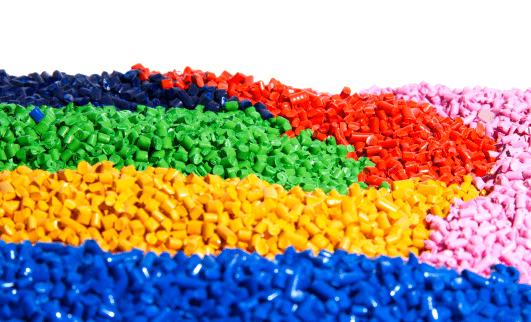
Sure, here are some additional details on the examples of taking precautions for injection molding material:
- Proper Material Storage: Storing materials in the wrong conditions can lead to degradation, contamination, and loss of mechanical properties. Proper storage of materials is crucial to ensure their quality and performance. Materials should be stored in a dry, cool, and well-ventilated area, away from heat sources, direct sunlight, and moisture. It’s also important to store different types of materials separately to avoid contamination and cross-reaction.
- Material Handling: Proper handling of materials is important to prevent contamination and damage. Materials should be handled with clean hands, and tools and equipment should be cleaned and maintained regularly. Using clean and properly maintained tools and equipment can help to prevent contamination and damage to the materials.
- Temperature Control: The temperature of the molding machine and the material should be monitored and controlled to ensure that the material is at the correct temperature for molding. The temperature of the injection molding material machine can affect the flow, shrinkage, and filling properties of the material, and can also affect the quality and performance of the final product.
- Material Conditioning: Material conditioning is the process of preparing the material for molding by heating it to the correct temperature and humidity level. This ensures that the material is in the best condition for molding, and it can help to improve the quality of the final product. It can also help to prevent defects and improve the efficiency of the molding process.
- Quality Control: Implementing: a quality control program is important to ensure the quality and performance of the final product. This includes regular testing of the material and final product to ensure that they meet the required specifications. This can include testing for strength, durability, chemical resistance, and compliance with industry standards and regulations.
- Compliance: It is important to ensure that the material used is compliant with the standards and regulations in the industry and country of usage to ensure the safety of the end-users. This includes checking that the material is compliant with safety regulations, environmental regulations, and industry standards. This can help to prevent recalls, penalties, and legal issues in the future.
- Safety Measures: Proper safety measures should be taken when handling materials, such as the use of personal protective equipment , following safety protocols, and training employees on proper handling procedures. This can help to prevent accidents and injuries, and also help to ensure compliance with safety regulations. This can include measures such as proper ventilation, handling hazardous materials, and emergency procedures.
In summary, these precautions are important to ensure the quality and performance of the injection molding material, and to ensure the safety of the employees and the compliance of the final product with the industry standards and regulations.The neatness is ensured by Injection molding in clean room so by taking these precautions, the chances of defects, recalls, penalties, and legal issues can be minimized, and it can also help to improve the efficiency and sustainability of the injection molding process.
Conclusion
Material selection for injection molding is a critical step in the manufacturing process as it affects the properties of the final product. Different materials have different properties and characteristics, and it’s important to choose the appropriate material for a specific product design.
It’s important to consult with an experienced professional to help you make the best choice for your product based on the specific requirements of the product.If you are in need of professional assistance for your injection molding material selection, please don’t hesitate to contact us at Sea Sky Medical. We are committed to providing you with the best service and support to ensure the success of your project.

